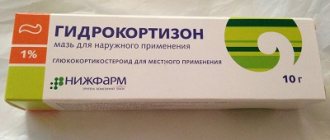Effective diuretics for ascites
For patients with ascites
The ideal is to sharply reduce dietary sodium, but this can be difficult to do and is generally not sufficient to prevent excess salt retention by the kidneys. Therefore, in patients with liver disease, diuretics are often necessary to reduce ascitic fluid formation and peripheral edema. An important element of treatment is diuresis induced by spironolactone, an aldosterone antagonist, in the kidneys. Spironolactone inhibits distal tubular sodium retention in the same way as it reduces renal potassium excretion.
If diuresis is under the influence of spironolactone
is insufficient, you can add furosemide, a loop diuretic. In addition, ascitic fluid can be removed (using paracentesis). The goal of therapy is to reduce the extravasation of fluid into the abdominal cavity, i.e. in reducing its accumulation.
Medicines or fluid
should be used with caution: intravascular volume reduction may lead to hypotension and renal failure. In addition, electrolyte imbalance can cause hepatic encephalopathy.
Drug therapy for hepatic encephalopathy
Hepatic encephalopathy
is a complex syndrome that occurs in many patients with severe liver failure. It is characterized by a disturbance of mental functions that can be profound and ultimately lead to coma. The pathogenesis of the disease is unclear, but it is associated with changes in ammonia concentrations and disturbances in the activation of GABA receptors, as well as changes in neurotransmitters in the brain.
There is an increased
risk of hepatic encephalopathy in patients with portal hypertension. This is probably due to the flow of venous blood from the gastrointestinal tract directly into the peripheral bloodstream, bypassing the passage through the liver.
Treatment
patients with hepatic encephalopathy involves general measures, in particular the correction of disturbances in the composition of plasma electrolytes, the prevention of a decrease in plasma volume, reducing protein intake and taking psychotropic drugs, i.e. Anything that may cause clinical deterioration should be avoided. Specific drug therapy for hepatic encephalopathy is aimed at reducing ammonia formation.
Neomycin
is an antibiotic with very low systemic bioavailability. It may be effective in the treatment of hepatic encephalopathy because it reduces the number of microorganisms with urease activity in the intestine. This reduces the formation of ammonia. Neomycin rarely causes renal or hearing toxicity (as occurs with other aminoglycosides) due to poor oral absorption.
Lactulose
is a sugar that is difficult to metabolize in the small intestine. In the colon, it is broken down into molecules of various organic acids; increased production of hydrogen ions lowers the pH of the intestinal contents, and ammonia (NH3) is converted to ammonium (NH4+). NH4+ is then trapped in the colonic lumen and therefore does not enter the peripheral circulation. The oral dose of lactulose is titrated to provide loose stools several times a day.
Excessive dosage of lactulose
may cause severe diarrhea, which may worsen hepatic encephalopathy due to decreased intravascular fluid volume and electrolyte imbalance (hyponatremia).
Source
Pathogenetic approaches to diuretic therapy of ascites
S. N. Mehdiev, Doctor of Medical Sciences, Professor Yu. A. Kravchuk, Candidate of Medical Sciences I. V. Subbotina O. A. Mehtieva * M. V. Shapovalov
VMA named after. S. M. Kirova, * St. Petersburg State Medical Academy named after. I. I. Mechnikova, St. Petersburg
Evaluation of the effectiveness of diuretic therapy in patients with liver cirrhosis with ascites
Indicators of treatment effectiveness in patients with ascites are:
Experts from the World Organization of Gastroenterology (OMGE) recommend that the tactics of diuretic therapy in patients with liver cirrhosis with ascites be based on an assessment of serum Na and creatinine levels [16].
In cases where:
In addition to the above indicators, during long-term diuretic therapy it is necessary to monitor the levels of potassium, magnesium, calcium, sugar, urea, uric acid, lipid profile, as well as the acid-base balance of the blood, taking into account all possible side effects of diuretics.
Dehydration therapy for ascites has active and maintenance phases.
In the active phase, in the absence of swelling of the legs, the excess of urine excreted over the ingested liquid should be about 1 liter per day, with a daily decrease in weight to 0.5–1 kg.
In the presence of swelling of the legs, positive diuresis can be 2–3 liters per day. In this case, there are no restrictions on daily weight loss. Once edema subsides but ascites remains, to prevent azotemia (due to decreased intravascular volume), the rate of weight loss should not exceed 0.5 kg per day, since excessive diuresis is accompanied by depletion of intravascular volume, which leads to renal failure, hepatic encephalopathy and hyponatremia .
In the maintenance phase, diuresis should be balanced and body weight stable with regular (daily) administration of diuretics.
An attempt at “impact” diuresis - once every few days - is erroneous. No rapid dehydration can be justified and only leads to hyperactivation of neurohormones and fluid retention in the body.
It should be noted that the volume of reduction of ascites in a patient with liver cirrhosis is limited by the level of reabsorption of ascitic fluid, which is 700–900 ml per day. Therefore, with polyuria up to 3 liters per day, a significant amount of non-ascitic extracellular fluid is lost, which leads to a decrease in edema and filling of the venous bed. It is safe as long as the patient has swelling. If stimulation of diuresis continues after the disappearance of edema and fluid loss exceeds the reabsorption limit of ascites, this leads to a decrease in the volume of circulating plasma. At the same time, renal blood flow decreases, which contributes to the development of functional renal failure and the development of hepatorenal syndrome (HRS), the mortality rate of which reaches 75%.
Refractoriness to diuretic therapy in patients with liver cirrhosis with ascites. Patients with liver cirrhosis may develop early (so-called inhibition of the effect) and late refractoriness. Early refractoriness appears in the first hours or days after the start of active prescription of diuretics, depends on the hyperactivation of neurohormones and is stronger, the more active the dehydration (unrecommended copious diuresis).
Treatment
The measures are aimed at treating the underlying disease, reducing sodium chloride retention (a salt-free diet, diuretics, aldosterone antagonists are prescribed); elimination of circulatory disorders (by prescribing cardiac glycosides for cardiac decompensation, albumin infusions for hypoproteinemia, oxygen therapy for hypoxia, etc.); in severe cases, surgical intervention is performed.
Surgery
Puncture (paracentesis) of the abdominal cavity for: ascites is performed after emptying the bladder, with the patient in a sitting position; severe patients are placed on their back or side. A puncture with a trocar (internal diameter 2-3 mm), preferably having a lateral hole, is performed under local anesthesia, along the midline of the abdomen, in the middle between the pubis and the navel, or slightly outward from Monroe's point (the middle of the left umbilical-ostial line) to avoid injury to the lower epigastric or other vessels; the skin needs to be moved slightly downward or away from the puncture site so that the holes in it and in the deep layers do not coincide; occasionally resort to a skin incision. The liquid is released at intervals of 1-2 minutes to prevent overflow of the vessels of the portal system. An admixture of fresh blood to the ascitic fluid indicates damage to a blood vessel or abdominal organ, which requires wound revision or laparotomy. With rapidly accumulating ascites, prolonged leakage of fluid from the puncture site is possible (see Ascitic fistula). The flow of ascitic fluid under the skin is accompanied by tissue swelling in the area of the opening, sometimes spreading downward to the genitals.
In weakened patients, a thin polyvinyl chloride or silicone tube with small side holes is inserted into the abdominal cavity, which is glued to the skin with an adhesive plaster and lowered into a vessel into which ascitic fluid will slowly drain. Such drainage is continued for 8-20 hours.
With repeated punctures, fusion of the omentum or intestine with the anterior wall of the abdomen may develop, which poses a danger during subsequent punctures. Therefore, the places of the latter need to be changed. Paracentesis in patients with liver cirrhosis causes only a short-term decrease in ascites, worsens the protein composition of the blood, and in severe cases causes acute liver failure.
Ascitic fluid tested for sterility can be lyophilized and used for intravenous administration as a protein drug that also has diuretic properties.
With intra- or extrahepatic block, mainly with cirrhosis of the liver, causing portal hypertension and often accompanied by bleeding from the dilated veins of the esophagus and stomach, as well as with thrombosis of the hepatic veins (Chiari syndrome), surgical treatment is indicated. Diversion of ascitic fluid into the blood or bladder in crust, time does not apply. Sometimes methods of excision of the parietal peritoneum in various parts of the abdominal wall are used to absorb fluid into adjacent tissues. This principle is carried out in the Kalba operation - excision of the peritoneum and muscles in the lumbar triangle. The liquid is absorbed by the subcutaneous tissue and, according to various authors, disappears in 30% of cases. The “window” functions until it is closed by the mesothelium (from 4 weeks to 4-6 months). Kalba's operation is advisable for ascites as an addition to organo- and angioanastomoses.
Unloading the portal system is achieved by ligating the branches of the celiac artery.
Splenectomy for ascites is ineffective and has a high mortality rate (V.N. Shamov). Rienhoff (WF Rienhoff, 1950) proposed ligation of the common hepatic artery proximal to the origin of a. gastroduodenalis, but this operation has not become widespread due to its insignificant effectiveness. Intrahepatic circulation improves after denervation of the native hepatic artery.
Rice. 1. Omentorenopexy. Wrapping the lower pole of the kidney with an omentum and suturing it to the kidney capsule.
, porto-caval organ anastomoses are most widely used.
.
They were proposed by S. Talma in 1887 and D. Drummond in 1895, and implemented in different versions by Lens, A.F. Eiseisberg, R.A. Narath, and R.A. Morison). In Russia, such operations were first performed by A. A. Bobrov (omentofixation in 1889 and diaphragmohepatofixation in 1904). Further, the number of options for organ anastomosis, especially omentopexy, increases. Narat (1905) sutured the omentum to the subcutaneous tissue of the anterior abdominal wall. Schiassi (V. Schiassi, 1914) brought the omentum preperitoneally, Mayo (CH Mayo, 1918) - into the sheath of the rectus abdominis muscle, Kopf (Kopf, 1951) - into the prevesical space, F. G. Uglov (1953) - into the pleural cavity through hole in the diaphragm. In 1913, P. A. Herzen first performed omentorenopexy, which is still used today (Fig. 1). V.F. Vilkhova (1956) proposed wrapping the inferior vena cava with an omentum. Rice.
2. Omentohepatophrenopexy: 1 - bringing the omentum to the upper surface of the liver; 2 - fixation of the removed area of the greater omentum in the subcutaneous tissue of the anterior abdominal wall. Of the organ anastomoses, omentohepatophrenopexy provides the greatest clinical effect (A. T. Lidsky, Ya. A. Kampelmacher, B. P. Kirillov). G. G. Karavanov and M. P. Pavlovsky (1954) use omentohepatophrenopexy in combination with modified Kalb and Narat operations: the surface of the liver and diaphragm is scarified, the omentum is brought in (Fig. 2, 1) and fixed to the diaphragm with sutures through the edge of the liver or behind round ligament; at the level of the lumbar triangle, a “window” is excised according to Kalb; the left part of the omentum is fixed in the subcutaneous tissue of the anterior abdominal wall (Fig. 2.2) according to Narat. This complex is complemented by a biliodigestive anastomosis (cholecystojejuno- or cholecystoduodenostomy) for the evacuation of bile from sclerotic extrahepatic bile ducts.
In the early stages of cirrhosis in young people, mainly to prevent ascites and bleeding, portocaval angioanastomoses are applied (see Portocaval anastomosis). If the portal vein is affected, an anastomosis is placed between the superior mesenteric and inferior vena cava or, more often, between the splenic and left renal veins. The choice of method of anastomosis depends on the results of measuring pressure in the portal system before and during surgery, as well as splenoportography (see), portography through the umbilical vein. However, with ascites, these operations are rarely performed due to their high operational risk and unsatisfactory long-term results.
With cirrhosis, the amount of lymph flowing from the liver increases, the thoracic lymphatic duct expands, through which about 20% of the liver lymph flows in a person. The terminal section and the venous mouth of the duct do not expand, and stagnation of lymph and ascites occurs (chyle-ascites). AE Dumout and J. Mulholland proposed and carried out in the clinic the treatment of drug-resistant ascites (1960) and bleeding from esophageal varices (1962) by external drainage of the thoracic duct, and Degni (1965) with employees - by internal drainage through the jugular vein or esophagus.
Prevention
Ascites consists of timely and correct treatment of diseases that can lead to its development.
Ascites in oncological pathology
Ascites (accumulation of fluid in the abdominal cavity) is detected in 50% of patients in the early stages of cancer and in almost all patients in whom the cancer process is at the last stage.
The Oncology Clinic of the Yusupov Hospital is equipped with the latest diagnostic equipment from the world's leading manufacturers, with the help of which oncologists identify the early stages of oncological pathology. Chemotherapists, radiologists, and oncologists treat patients with ascites in accordance with international standards of medical care. At the same time, doctors take an individual approach to choosing a treatment method for each patient.
Conservative and surgical care for the patient
A patient with heart failure who develops edema requires immediate hospitalization in a cardiology hospital.
A set of actions aimed at helping a patient with ascites includes:
- treatment of the underlying disease;
- limiting salt intake;
- replenishment of protein deficiency;
- diuretic therapy;
- laparocentesis.
Therapy for CHF:
- ACE inhibitors: dilate blood vessels, lower blood pressure, improve blood flow and reduce stress on the heart;
- Angiotensin receptor blockers: the principle of action is similar to the previous drug. Prescribed for intolerance to ACE inhibitors;
- Beta blockers: slow the heart rate;
- Diuretics: remove fluid that forms swelling, thereby lowering blood pressure and improving breathing
- Digoxin: increases heart contractions, reducing them;
- Nitroglycerin: improves blood flow in the myocardium;
- Statins: used to treat atherosclerosis;
- Anticoagulants: normalize blood clotting;
For therapeutic purposes, puncture of the abdominal cavity is performed in the following cases:
- respiratory impairment;
- abdominal pain due to fluid pressure (abdominal compartment syndrome);
- failure of conservative therapy;
Paracentesis technique:
- Treating the surgical field with antiseptics.
- Infiltration of the skin at the site of future puncture with anesthetic.
- A small incision with a scalpel to insert a catheter (made under the navel or on both sides of it).
- Insertion of a catheter into the abdominal cavity.
- Aspiration of fluid (performed very slowly, within 5 liters at a time).
- Removing the catheter.
- Treat with an antiseptic and apply a sterile bandage to the puncture site.
- Ultrasound control.
During therapeutic paracentesis, peritoneal fluid is necessarily taken for cytological and biochemical analysis to clarify its genesis.
Laparocentesis can be complicated by the formation of adhesions and infection, since it is an intervention in the sterile environment of the abdominal cavity.
Fluid aspiration is repeated as necessary. However, the need to resume punctures indicates that the pathological process is progressing and cannot be treated. In this case, it is important to provide full palliative care, alleviate suffering, make the patient’s life as comfortable as possible and prepare for decent care.
Reasons for development
Ascites is a serious complication of stomach and colon cancer, colorectal cancer, malignant tumors of the pancreas, and oncological pathology of the mammary glands, ovaries and uterus. When a large volume of fluid accumulates in the abdominal cavity, intra-abdominal pressure increases, and the diaphragm moves into the chest cavity. This leads to disruption of the heart and lungs. There is a violation of blood circulation in the vessels.
In the presence of ascites, the patient's body loses a large amount of protein. Metabolism is disrupted, heart failure and other imbalances in the internal environment of the body develop, which worsen the course of the underlying disease.
There is always a small amount of fluid in the abdominal cavity of a healthy person. It prevents the sheets of peritoneum from sticking together. The produced intra-abdominal fluid is reabsorbed by the peritoneum.
With the development of cancer, the normal functioning of the body is disrupted. The secretory, resorptive and barrier functions of the peritoneal layers fail. In this case, either excess fluid production or disruption of its absorption processes may be observed. As a result, a large volume of exudate accumulates in the abdominal cavity. It can reach twenty liters.
The main reason for damage to the peritoneum by malignant cells is its close contact with organs that are affected by a cancerous tumor. Ascites in the presence of oncological pathology develops under the influence of the following factors:
- A large accumulation of blood and lymphatic vessels in the peritoneum through which cancer cells spread;
- Tight fit of the folds of the peritoneum to each other, which contributes to the rapid spread of malignant cells to adjacent tissues;
- Germination of a cancerous tumor through the peritoneal tissue;
- Transfer of atypical cells to peritoneal tissue during surgery.
Chemotherapy may be the cause of ascites. The accumulation of fluid in the peritoneum occurs due to cancer intoxication. If the liver is affected by a primary cancerous tumor, metastases of malignant cells from tumors of a different location, the outflow of blood through its venous system is disrupted, and portal hypertension develops - an increase in pressure inside the portal vein. The lumen of the venous vessels increases, plasma sweats from them and accumulates in the abdominal cavity.
The cause of ascites may be peritoneal carcinomatosis. In the presence of a cancerous tumor of the abdominal organs, atypical cells settle on the parietal and visceral sheets of the peritoneum. They block the resorptive function, as a result of which the lymphatic vessels do not cope well with the intended load, and lymph outflow is impaired. Free fluid gradually accumulates in the abdominal cavity. This is the mechanism of development of carcinomatous ascites.
Stages of severity
There are three stages of abdominal hydrops depending on the amount of accumulated fluid:
- Initial stage - up to one and a half liters of fluid accumulates in the abdominal cavity;
- Moderate ascites - manifested by an increase in the size of the abdomen, edema of the lower extremities. The patient is concerned about severe shortness of breath, heaviness in the abdomen, heartburn, constipation;
- Severe dropsy - from 5 to 20 liters of fluid accumulates in the abdominal cavity. The skin on the abdomen tightens and becomes smooth. Patients experience heart failure and respiratory failure. When the fluid becomes infected, ascites-peritonitis (inflammation of the peritoneal layers) develops.
Symptoms
The main manifestation of ascites is a significant increase in size and pathological bloating of the abdomen. Signs of abdominal dropsy can increase rapidly or over several months. Ascites is manifested by the following clinical symptoms:
- Feeling of fullness in the abdominal cavity;
- Pain in the abdomen and pelvis;
- Increased gas formation (flatulence);
- Belching;
- Heartburn;
- Digestive disorders.
Visually, the patient’s abdomen enlarges, in a horizontal position it hangs down and begins to “blur” on the sides. The navel gradually protrudes more and more, and blood vessels are visible on the stretched skin. As ascites develops, it becomes difficult for the patient to bend over and shortness of breath appears.
Doctors at the Oncology Clinic evaluate the clinical manifestations of the disease and carry out a differential diagnosis of cancer with other diseases, the manifestation of which is ascites.
Diagnostics
Doctors identify ascites during an examination of the patient. Oncologists at the Yusupov Hospital conduct a comprehensive examination of patients, which allows them to identify the cause of fluid accumulation in the abdominal cavity. One of the most reliable diagnostic methods is ultrasound. During the procedure, the doctor not only clearly sees the liquid, but also calculates its volume.
In case of ascites, oncologists necessarily perform laparocentesis. After puncturing the anterior abdominal wall, the doctor aspirates fluid from the abdominal cavity and sends it to the laboratory for testing. Computed tomography radiology scans are used to determine the presence of malignant tumors in the liver that cause portal hypertension.
Magnetic resonance imaging makes it possible to determine the amount of accumulated fluid and its location.
Diagnosis
In addition to the clinical signs of ascites outlined above, puncture of the abdominal cavity with laboratory testing of ascitic fluid is of great diagnostic importance. In most cases, the liquid is transparent, neutral or slightly alkaline, its specific gravity is not more than 1.015, and the protein concentration is not higher than 2.5%; contains mainly endothelial cells, and in the case of malignant lesions, also tumor cells, the differentiation of which causes considerable difficulties (see Cytological examination). Irritation of the peritoneum as a result of repeated paracentesis contributes to the appearance of leukocytes and lymphocytes in the ascitic fluid.
Non-cancerous ascites
Ascites is a consequence of various disorders that occur in the body. Treatment tactics depend on the pathological process that caused the accumulation of fluid in the abdominal cavity:
- To treat acute heart failure, cardiologists at the Yusupov Hospital prescribe metabolites, beta blockers, and ACE inhibitors to patients;
- For infectious and toxic liver lesions, therapy with hepatoprotectors is carried out;
- If ascites has developed due to low protein levels in the blood, albumin infusions are performed;
- Ascites that develops as a result of peritoneal tuberculosis is treated with anti-tuberculosis drugs.
To remove fluid from the body, patients with ascites are prescribed diuretics. The main method of eliminating ascites is to remove accumulated fluid by puncturing the abdominal wall, followed by installing drainage. For persistent ascites, peritoneal fluid is reinfused after filtration. A peritoneovenous shunt for abdominal ascites ensures the flow of fluid into the general bloodstream. To do this, surgeons form a structure with a valve, through which fluid from the abdominal cavity enters the superior vena cava system during inhalation.
Omentohepatophrenopexy for abdominal ascites is performed to reduce pressure in the venous system. The surgeon sutures the omentum to the diaphragm and liver. Then, during breathing movements, the veins are unloaded from blood. As a result, the release of fluid through the vascular wall into the abdominal cavity decreases. As a result of deperitonization (excision of areas of the peritoneum), additional outflow pathways for peritoneal fluid are created.
Types of disease
In the main classification, to differentiate pathology, the level of protein in the accumulated fluid is taken into account. According to this indicator, the disease is divided into:
- Exudative (25 g/l or more);
- Transudative (<25 g/l).
Such a division makes it possible to understand, albeit indirectly, what is the cause of the development of the disease.
Today, another indicator is used in medical practice - SAAG.
If this gradient is > 1.1, then most likely the cause of the disease is cirrhosis, heart failure, etc. All of them increase the pressure in the venous trunk.
If the gradient index is <1.1, then the cause of the disease can be considered pancreatitis or an oncological process.
Taking into account the clinical course of the disease, it is necessary to highlight the following varieties, which will be discussed below.
- Severity of the current:
- First degree. There are no symptoms, diagnosed by examination and ultrasound.
- Second degree. The abdomen is slightly enlarged.
- Third degree. The abdomen is significantly enlarged.
- An uncomplicated option. There are no signs of infection of the accumulated fluid mass and abnormalities in kidney function.
- Refractory ascites:
- Unaffected by diuretics;
- Not controlled by diuretics.
Forecast
Ascites in cancer significantly worsens the general well-being of the patient. As a rule, such a complication occurs in the later stages of oncology, in which the survival prognosis depends on the nature of the tumor itself and its distribution throughout the body.
Life expectancy with ascites depends on the following factors:
- Functioning of the kidneys and liver;
- Activities of the cardiovascular system;
- The effectiveness of therapy for the underlying disease.
The development of ascites can be prevented by an experienced doctor observing the patient. Doctors at the Yusupov Hospital have extensive experience in dealing with various types of cancer. Qualified medical personnel and the latest equipment allow for accurate diagnosis and high-quality, effective treatment in accordance with European standards.
conclusions
The prognosis for the health and life of a patient who has developed ascites in heart failure can be improved by taking active therapeutic measures. However, despite the advances of modern medicine, it remains unfavorable. The presence of concomitant pathology, age, complex cardiac arrhythmias, high arterial hypertension and the presence of effusion in the pleural cavity indicate that death is inevitable. In this case, it is important to ensure a worthy completion of life’s journey and alleviate the suffering of the patient.









